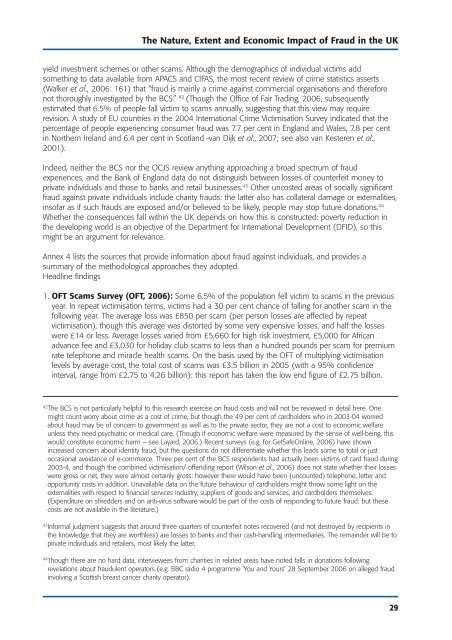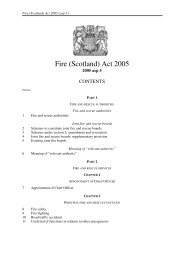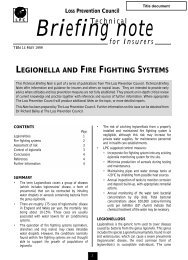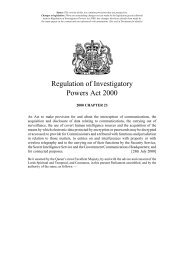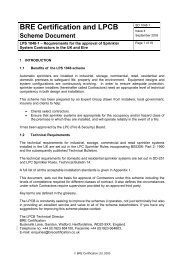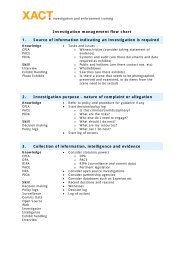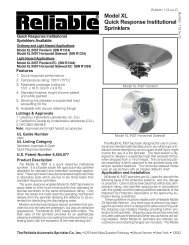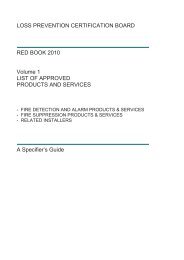The Nature, Extent and Economic Impact of ... - Cardiff University
The Nature, Extent and Economic Impact of ... - Cardiff University
The Nature, Extent and Economic Impact of ... - Cardiff University
You also want an ePaper? Increase the reach of your titles
YUMPU automatically turns print PDFs into web optimized ePapers that Google loves.
<strong>The</strong> <strong>Nature</strong>, <strong>Extent</strong> <strong>and</strong> <strong>Economic</strong> <strong>Impact</strong> <strong>of</strong> Fraud in the UK<br />
yield investment schemes or other scams. Although the demographics <strong>of</strong> individual victims add<br />
something to data available from APACS <strong>and</strong> CIFAS, the most recent review <strong>of</strong> crime statistics asserts<br />
(Walker et al., 2006: 161) that “fraud is mainly a crime against commercial organisations <strong>and</strong> therefore<br />
not thoroughly investigated by the BCS.” 42 (Though the Office <strong>of</strong> Fair Trading, 2006, subsequently<br />
estimated that 6.5% <strong>of</strong> people fall victim to scams annually, suggesting that this view may require<br />
revision. A study <strong>of</strong> EU countries in the 2004 International Crime Victimisation Survey indicated that the<br />
percentage <strong>of</strong> people experiencing consumer fraud was 7.7 per cent in Engl<strong>and</strong> <strong>and</strong> Wales, 7.8 per cent<br />
in Northern Irel<strong>and</strong> <strong>and</strong> 6.4 per cent in Scotl<strong>and</strong> -van Dijk et al., 2007; see also van Kesteren et al.,<br />
2001).<br />
Indeed, neither the BCS nor the OCJS review anything approaching a broad spectrum <strong>of</strong> fraud<br />
experiences, <strong>and</strong> the Bank <strong>of</strong> Engl<strong>and</strong> data do not distinguish between losses <strong>of</strong> counterfeit money to<br />
private individuals <strong>and</strong> those to banks <strong>and</strong> retail businesses. 43 Other uncosted areas <strong>of</strong> socially significant<br />
fraud against private individuals include charity frauds: the latter also has collateral damage or externalities,<br />
ins<strong>of</strong>ar as if such frauds are exposed <strong>and</strong>/or believed to be likely, people may stop future donations. 44<br />
Whether the consequences fall within the UK depends on how this is constructed: poverty reduction in<br />
the developing world is an objective <strong>of</strong> the Department for International Development (DFID), so this<br />
might be an argument for relevance.<br />
Annex 4 lists the sources that provide information about fraud against individuals, <strong>and</strong> provides a<br />
summary <strong>of</strong> the methodological approaches they adopted.<br />
Headline findings<br />
1. OFT Scams Survey (OFT, 2006): Some 6.5% <strong>of</strong> the population fell victim to scams in the previous<br />
year. In repeat victimisation terms, victims had a 30 per cent chance <strong>of</strong> falling for another scam in the<br />
following year. <strong>The</strong> average loss was £850 per scam (per person losses are affected by repeat<br />
victimisation), though this average was distorted by some very expensive losses, <strong>and</strong> half the losses<br />
were £14 or less. Average losses varied from £5,660 for high risk investment, £5,000 for African<br />
advance fee <strong>and</strong> £3,030 for holiday club scams to less than a hundred pounds per scam for premium<br />
rate telephone <strong>and</strong> miracle health scams. On the basis used by the OFT <strong>of</strong> multiplying victimisation<br />
levels by average cost, the total cost <strong>of</strong> scams was £3.5 billion in 2005 (with a 95% confidence<br />
interval, range from £2.75 to 4.26 billion): this report has taken the low end figure <strong>of</strong> £2.75 billion.<br />
42<br />
<strong>The</strong> BCS is not particularly helpful to this research exercise on fraud costs <strong>and</strong> will not be reviewed in detail here. One<br />
might count worry about crime as a cost <strong>of</strong> crime, but though the 49 per cent <strong>of</strong> cardholders who in 2003-04 worried<br />
about fraud may be <strong>of</strong> concern to government as well as to the private sector, they are not a cost to economic welfare<br />
unless they need psychiatric or medical care. (Though if economic welfare were measured by the sense <strong>of</strong> well-being, this<br />
would constitute economic harm – see Layard, 2006.) Recent surveys (e.g. for GetSafeOnline, 2006) have shown<br />
increased concern about identity fraud, but the questions do not differentiate whether this leads some to total or just<br />
occasional avoidance <strong>of</strong> e-commerce. Three per cent <strong>of</strong> the BCS respondents had actually been victims <strong>of</strong> card fraud during<br />
2003-4, <strong>and</strong> though the combined victimisation/ <strong>of</strong>fending report (Wilson et al., 2006) does not state whether their losses<br />
were gross or net, they were almost certainly gross: however there would have been (uncounted) telephone, letter <strong>and</strong><br />
opportunity costs in addition. Unavailable data on the future behaviour <strong>of</strong> cardholders might throw some light on the<br />
externalities with respect to financial services industry, suppliers <strong>of</strong> goods <strong>and</strong> services, <strong>and</strong> cardholders themselves.<br />
(Expenditure on shredders <strong>and</strong> on anti-virus s<strong>of</strong>tware would be part <strong>of</strong> the costs <strong>of</strong> responding to future fraud: but these<br />
costs are not available in the literature.)<br />
43<br />
Informal judgment suggests that around three quarters <strong>of</strong> counterfeit notes recovered (<strong>and</strong> not destroyed by recipients in<br />
the knowledge that they are worthless) are losses to banks <strong>and</strong> their cash-h<strong>and</strong>ling intermediaries. <strong>The</strong> remainder will be to<br />
private individuals <strong>and</strong> retailers, most likely the latter.<br />
44<br />
Though there are no hard data, interviewees from charities in related areas have noted falls in donations following<br />
revelations about fraudulent operators (e.g. BBC radio 4 programme ‘You <strong>and</strong> Yours’ 28 September 2006 on alleged fraud<br />
involving a Scottish breast cancer charity operator).<br />
29


